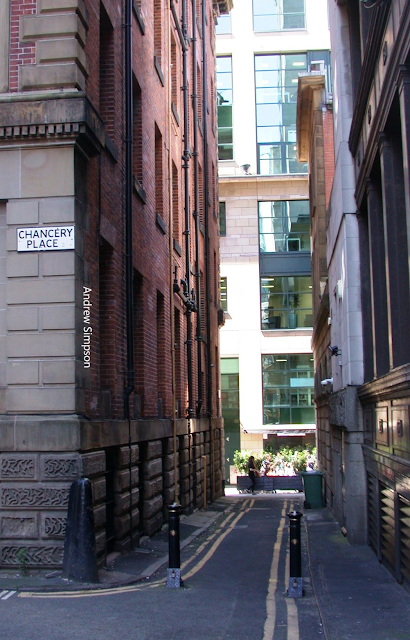There is just an outside chance that there is someone who remembers Mr. and Mrs. Chetham who lived at Grindley Avenue in Chorlton.
 |
| The grave of Arthur Chetham, 2021, Nederweert |
They were there from at least 1939 and possibly earlier, and it will be from there that their son Arthur went off war and Joyce, their daughter went off to be married.
She married Arthur Sutton in 1945, and may have stayed local.
I am not sure when her brother enlisted, or his early career in the army, but in 1944 he was in the 8th Battalion of the Royal Scots which was raised on August 2nd 1939. This fits, because he was already away from the family home at the beginning of September of that year.
His battalion stayed in the UK until June 1944 when it landed in Normandy and fought at the Battle for Caen in Operation Epsom, and later at the Second Battle of the Odon and Operation Bluecoat.
The battalion then fought in the North West Europe Campaign, from Paris to the Rhine, until the end of the war.
They entered Belgium in September, crossed the Rhine in March 1945, and advanced to Hamburg by the end of the war.*
Arthur was killed on October 31st 1944, between the villages of Asten, Liessel and Neerkant, during the advance through the Netherlands and is buried in the British War Cemetery at Nederweert.
I doubt I would ever have come across his story were it not from the appeal posted by Jürgen Beekers on social media asking for help to track down information on this young man who is one of 363 Commonwealth servicemen who buried in the Nederweert war cemetery.
 |
| Candles lit on Christmas Eve, 2020 |
Many of whom have been adopted by residents in the region around the municipality of Nederweert, which is co-ordinated by The Adoption Graves Foundation of the Nederweert War Cemetery, and involves visiting an adopted grave several times a year, which might be on the birthday of the dead serviceman and annually on Remembrance Day and Christmas Eve when candles are lit on the graves.
In the case of Private Chetham, there was little known, other than that he was the son of Arthur James Chetham and Edith Emily Chetham of Chorlton-cum-Hardy.
Jürgen’s appeal was successful and while we still do not know too much about Arthur, there is a better understanding of his family, and in the course of the next week we should know exactly when he was born, which will assist in commemorating his birthday in a simple ceremony at his grave.
And that brings me back to the hope that someone may know something of the family, and perhaps have a picture of our young soldier.
 |
| The position of Private Chetham's grave marked with a red circle, 2021 |
Tantalisingly, there are a number of family historians who have included Arthur’s parents on their family trees deposited on the genealogical platform, Ancestry.
It may just be possible that these family historians have links to others who knew the Chetham’s.
And while I await developments I will track down a reference to Arthur in the Manchester Evening News, and research the regimental diaries of the 8th Battalion for October 1944.
 |
| Unit of the 8th Battalion, October 27th, 1944 outside Tilburg |
By chance I came across a photograph of the 8th Royal Scots pausing during the attack on Tilburg, on October 27th. Tilburg is roughly 66 km north of Nederweert.
So far it is the closest I have got to him, but at least, a little of the story of a young man from Chorlton-cum-Hardy who was killed 77 years ago has come out of the shadows, and will help those in Nederweert, honour his memory.
Location; Nederweert
Pictures; Infantry and carriers of 8th Royal Scots pause during the attack on Tilburg in the Netherlands, October 27th, 1944, Sergeant Laing, No 5 Army Film & Photographic Unit, Imperial War Museum, Nederweert War Cemetery , 2020-2021, courtesy of The Adoption Graves Foundation of the Nederweert War Cemetery, and the collection of Jürgen Beekers
*Royal Scots, https://en.wikipedia.org/wiki/Royal_Scots
** The Adoption Graves Foundation of the Nederweert War Cemetery https://adoptiongravesnederweert.com
















































